Find out below which one of Budapest's thermal baths works best for you.

For thousands of years, locals have enjoyed the steaming, mineral-rich thermal water simmering beneath Budapest's surface. The remains of the Roman-era public baths, Thermae Maiores, are still visible, while some of the hammams that Ottoman Turkey built during its occupation of Buda-Pest continue to function as such (Rudas, Király, Veli Bej).
Another wave of bathhouse-building frenzy took place during Budapest's golden years under Austria-Hungary in the early 20th century. Unlike the snug hammams, these are vast, striking baths inside lavish Revival and Art Nouveau buildings, such as Széchenyi and Gellért Baths.
Why should I go to a thermal bath?
Science has yet to verify the healing effects of balneotherapy, the treatment of pain in thermal water; it’s possible that minerally water is a useful supplement to standard treatments, but there's insufficient evidence to prove it. So what’s all the fuss about thermal bathing then? Well, healing isn’t the only reason to soak yourself in hot water inside grand old buildings – bathing is also a great way to relax, reflect, and socialize.
In fact, social gatherings and information exchange have traditionally been central to Budapest bathhouses. This was especially true during the most repressive years of the Communist-era, in the late 1940s and 1950s, when hiding amid clouds of mist and the background noise of running water was a relatively safe refuge for covert political discussions.
But despite what you might think, the majority of Hungarians don’t regularly go to thermal baths. At the seven main baths featured below, about 75 percent of guests are tourists on average. Locals who do go to baths mainly consist of diehard regulars, and patients looking to treat ailments like rheumatoid arthritis and muscle pain. As an added incentive, the Hungarian national health insurance plan subsidizes these prescribed visits.
Budapest has a total of nine medicinal baths today (and 123 hot springs). While the water’s mineral content is comparable, each bath is unique in terms of its size, architecture, amenities, and the type of visitors it draws. Most popular and biggest of all is Széchenyi, located inside Budapest's City Park, followed by Gellért and Rudas. In turn, many locals seek out quieter locations with lower admission fees.
Know before you go
A swimsuit, a pair of sandals, and a towel are all you need to bring. And a swim cap in case you'd like to use the swimming pools, too. The general admission, which ranges from €20 to €30, includes the price of a small locker (you can also rent a cabin for a surcharge).
On weekends, baths operate at full capacity, meaning that people are packed like sardines. You'll do yourself a favor if you visit on a weekday (admission fees are also slightly lower then).
If you go to Széchenyi or Gellért, try to get there at opening (Széchenyi usually opens at 7 a.m., Gellért at 9) – that's when you'll find the local regulars and the baths won't be so crowded.
Like it or not, nudity is no longer accepted. Except for Rudas, all Budapest baths are coed and require a bathing suit. See details below on Rudas.
Bathing is a year-round activity, but soaking in steaming-hot water is especially reviving in the gloomy winter months, particularly in the outdoor pools (except for Veli Bej, all baths have both indoor and outdoor sections).
In most bathhouses, there's a labyrinthine system of lockers and changing rooms with few signs to help you find your way. Instead of losing your patience as you keep getting lost, think of it as part of the experience.
Water temperatures across the pools usually range from 30 to 40 degrees Celsius (86 to 104 Fahrenheit). The general admission also covers the use of cold pools, saunas, and steam rooms.
Some baths offer refunds for shorter stays. Tickets for less than two hours and afternoon-only stays are most common.
Many baths offer additional services like massages, private baths, and pedicures for an extra charge. Check the baths' websites below for the full list of amenities.
Thermal water enthusiasts can buy mineral-rich water to drink. Széchenyi, Rudas, and Lukács each have a thermal water fountain with sulfurous water for consumption (if you bring an empty bottle, you can also take some to go). Prices won’t set you back much: a glass costs about ten euro cents.
Except for Király, all bathhouses are wheelchair accessible.
The Top 7
#1 SZÉCHENYI Baths (location; Monday to Sunday 7 a.m. to 8 p.m.)

What’s unique about it? The Times Square of thermal baths. As first time visitors to New York City, you too may want to head to Széchenyi, just be sure to set your expectations. With 1.7 million annual visitors, 15 indoor pools and almost 3,000 sqm of water surface, the place on weekends can feel more like an amusement park than a thermal bath. Use the main entrance from Kós Károly sétány for a glance of the striking dome and the interior mosaics of this Baroque Revival building. Immersing yourself in the steaming outdoor pool during the winter months is especially memorable.
Percent of locals: 15%. Number of pools: 15 indoor, 3 outdoor. Coed? Yes, every day. Admission (adults): HUF12,000 / €30 (includes the outdoor pools).
#2 GELLÉRT Baths (location; Monday to Sunday 9 a.m. to 7 p.m.)
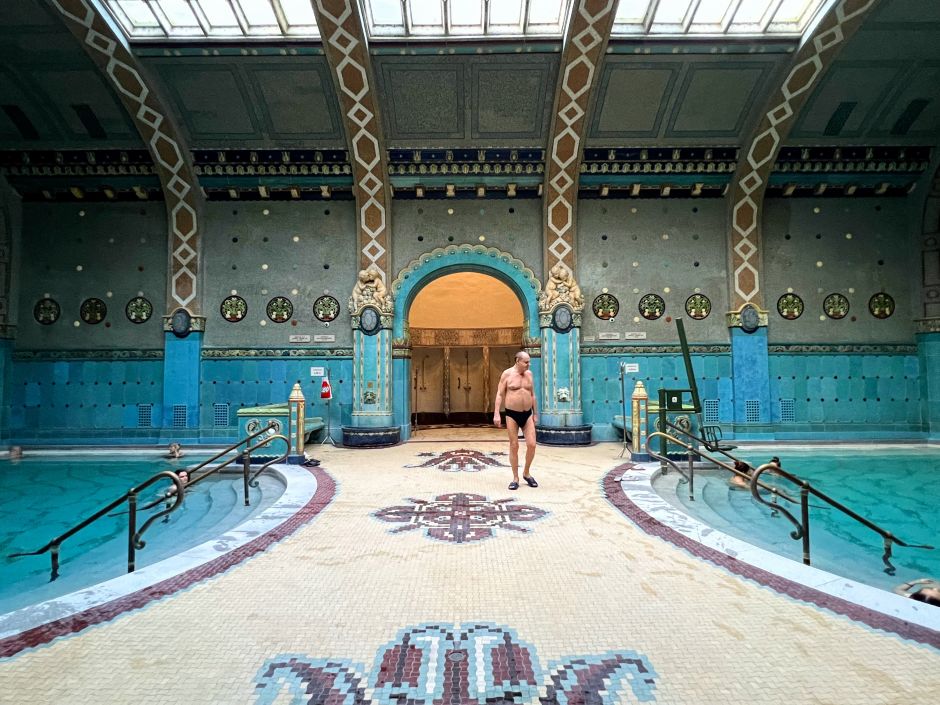
What’s unique about it? Budapest’s second most popular bath, after Széchenyi, is attached to Hotel Gellért, an Art Nouveau landmark from 1918. Expect Instagram-friendly indoor pools studded with turquoise glazed ceramics by Zsolnay that receive plenty of light through the sky windows (these pools are hidden in the back of the indoor bathing area). On weekday mornings, you can still mingle with locals here. Be sure to also visit the outdoor thermal pools, overlooking the Buda Hills and open year-round.
Percent of locals: 20%. Number of pools: 8 indoor, 2 outdoor. Coed? Yes, every day. Admission (adults): HUF12,000 / €30 (includes the outdoor pools).
#3 RUDAS Baths (location; Monday to Sunday 6 a.m. to 8 p.m.; night bathing on Friday and Saturday from 10 p.m. to 4 a.m.)

What’s unique about it? The dim, octagonal bath chamber was built under Ottoman pasha Sokollu Mustafa in the 16th century. On Monday, Wednesday, and Thursday and Friday mornings only men are permitted in the Turkish section (Tuesday is women's day, the rest coed). They saunter from pool to pool under the vaulted arcades wearing an apron-like cloth, kötény, covering little of their bodies. There's a newer wing open to all, which features an outdoor hot tub perched atop the building with sweeping views. It must be intentional that the water isn’t a few degrees warmer – people would never leave. Be sure your ticket covers both the indoor and outdoor sections and consider the 40-minute water massage service.
Percent of locals: 25% (on weekdays there are more locals). Number of pools: 11 indoor, 1 outdoor. Coed? After 1 p.m. on Thursday, after 11 a.m. on Friday and on the weekends. Details here. The wellness section and the outdoor hot tub are coed every day. Tuesday is “women’s day” at the Turkish pools. Admission (adults): HUF12,200 / €30 (includes the outdoor hot tub).
#4 LUKÁCS Baths (location; Monday to Sunday 7 a.m. to 7 p.m.)
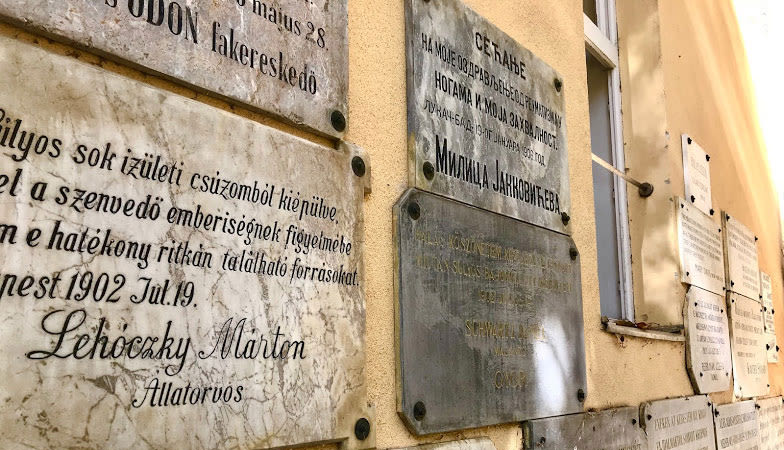
What’s unique about it? Less bombastic than Gellért and Széchenyi, Lukács is a more straightforward bath frequented by many locals. Apart from the dim, labyrinthine indoor section, there are also swimming pools and a sunbathing terrace outside. Note the cluster of marble plaques on the side of the main building, commissioned by cured visitors as tokens of gratitude. Lukács has long been known as the bath patronized by local intellectuals.
Percent of locals: 50%. Number of pools: 4 indoor, 2 outdoor. Coed? Yes, every day. Admission (adults): HUF5,200 / €13 (includes the outdoor pools).
#5 KIRÁLY Baths (location; closed for renovation)
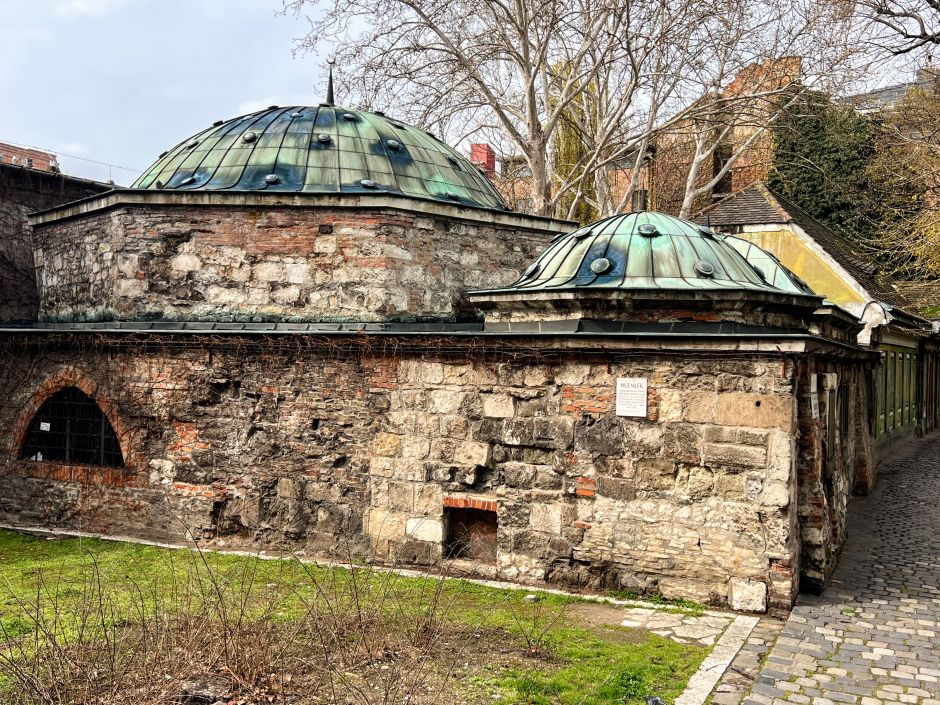
What’s unique about it? NOTE: Király is currently closed for renovation works. Part-Ottoman, part-19th century, Király is the smallest and coziest bath on this list. Using underground pipes, the Turkish pasha had it built away from its water source and within the city walls to ensure that bathing could continue uninterrupted even in case of a war. Visit also the snug interior garden with a wooden hot tub and several cots.
Percent of locals: 50%. Number of pools: 4 indoor (an outdoor hot tub during the warm months). Coed? Yes, every day. Admission (adults): Closed for renovation works.
#6 VELI BEJ Baths (location; Monday to Friday 3 p.m. to 9 p.m.; on weekends 6 a.m. to noon and 3 p.m. to 9 p.m.)
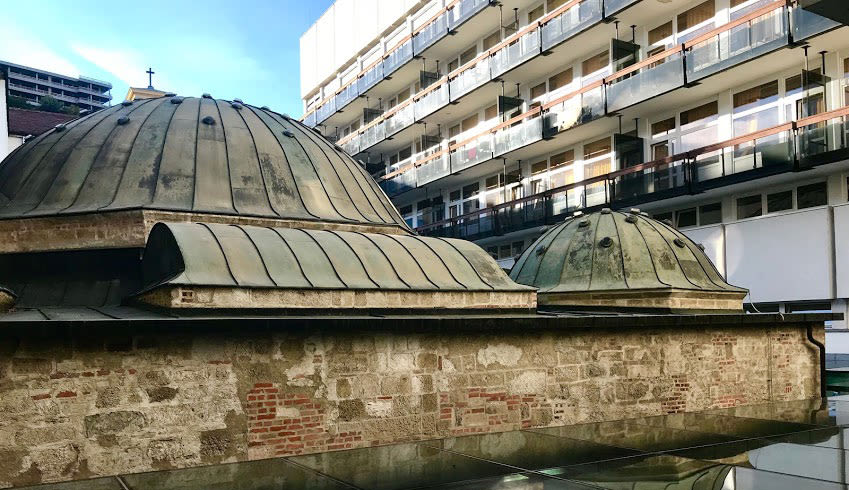
What’s unique about it? According to a 1673 chronicle, Veli Bej was the biggest and most gorgeous bath in Buda-Pest during the Ottoman-era. After a recent gut renovation, old and new harmoniously blend together: through Turkish domes and ogee arches leads the way to modern steam rooms and saunas. Veli Bej is managed by a Roman Catholic order, which doesn’t seem to run it for profit, making it one of the cheaper and least crowded options.
Percent of locals: 50%. Number of pools: 7 indoor. Coed? Yes, every day. Admission (adults): HUF5,000 / €13.
#7 DANDÁR Baths (location; Monday to Sunday 9 a.m. to 7 p.m.)
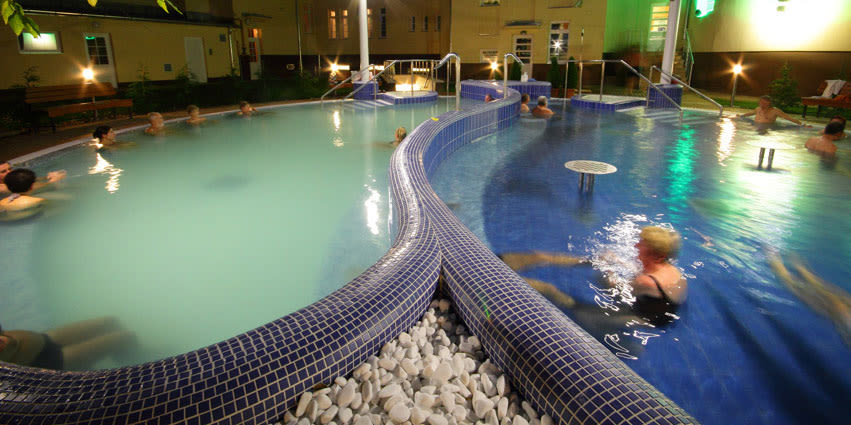
What’s unique about it? Dandár is located a bit outside the city center inside a 1930s Art Deco building. Drawing mainly locals, it comes closest to offering an immersive true-to-Budapest experience. The hot outdoor pool is best enjoyed during dreary winter evenings. Right next door is the production facility and the museum of Zwack Unicum, the iconic Hungarian herbal liqueur, with a gift shop in its entry hall.
Percent of locals: 90%. Number of pools: 3 indoor, 2 outdoor. Coed? Yes, every day. Admission (adults): HUF3,700 / €10 (includes the outdoor pools).
